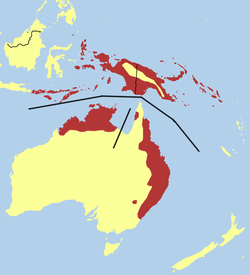| Common name | Scientific name and subspecies | Range | Size and ecology | IUCN status and estimated population |
|---|
| African cuckoo-hawk  | Aviceda cuculoides
Swainson, 1837
- A. c. subsp. cuculoides
- A. c. subsp. batesi
- A. c. subsp. verreauxii
| Sub-Saharan Africa and eastern parts of southern Africa | Size:
Habitat:
Diet: | LC
[4]
|
|---|
| Jerdon's baza  | Aviceda jerdoni
(Blyth, 1842)
- A. j. jerdoni (Blyth, 1842)
- A. j. ceylonensis (Legge, 1876)
- A. j. borneensis (Sharpe, 1893)
- A. j. magnirostris (Kaup, 1847)
- A. j. leucopias (Sharpe, 1888)
- A. j. celebensis (Schlegel, 1873)
| South-east Asia | Size:
Habitat:
Diet: | LC
[6]
|
|---|
| Black baza  | Aviceda leuphotes
(Dumont, 1820)
- A. l. syama (Hodgson, 1837)
- A. l. leuphotes (Dumont, 1820)
- A. l. andamanica (Abdulali & Grubh, 1970)
| Northeast India, the eastern Himalayas, China and Southeast Asia.
 | Size:
Habitat:
Diet: | LC
[7]
|
|---|
| Madagascar cuckoo-hawk  | Aviceda madagascariensis
(Smith, 1834) | Madagascar.
 | Size:
Habitat:
Diet: | LC
[8]
|
|---|
| Pacific baza  | Aviceda subcristata
(Gould, 1838)
- Aviceda subcristata bismarckii(Sharpe, 1888)
- A. s. coultasi(Mayr, 1945)
- A. s. gurneyi(E. P. Ramsay, 1882)
- A. s. megala(Stresemann, 1913)
- A. s. obscura(Junge, 1956)
- A. s. pallida(Stresemann, 1913)
- A. s. reinwardtii(Schlegel & S. Müller, 1841)
- A. s. rufa(Schlegel, 1866)
- A. s. stenozona(G. R. Gray, 1858)
- A. s. stresemani(Siebers, 1930)
- A. s. subcristata(Gould, 1838)
- A. s. timorlaoensis(A. B. Meyer, 1893)
- A. s. waigeuensis(Mayr, 1940)
| Australia, Indonesia, Papua New Guinea, and Solomon Islands and South Africa and East Timor
 | Size:
Habitat:
Diet: | LC
[9]
|
|---|











